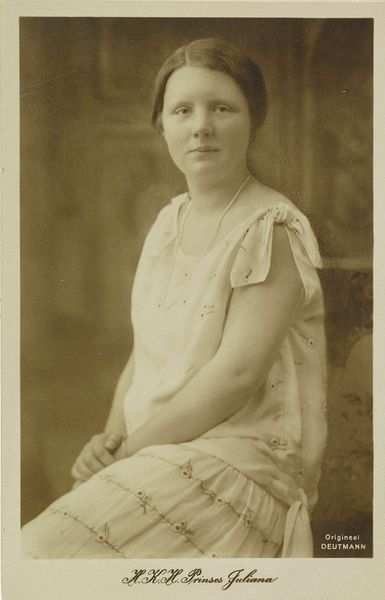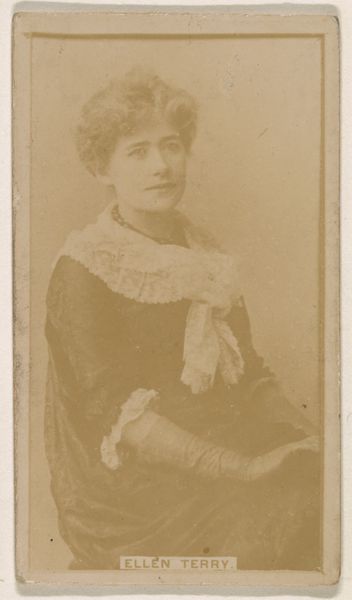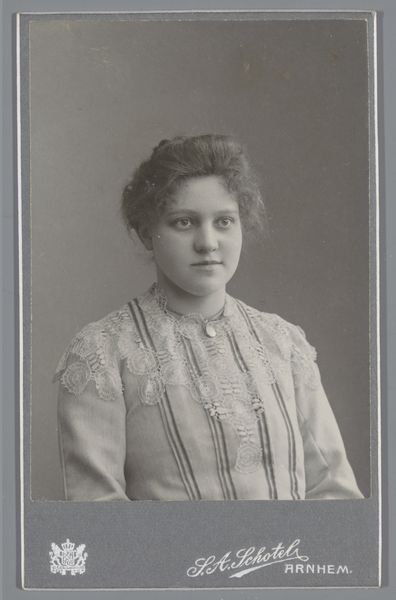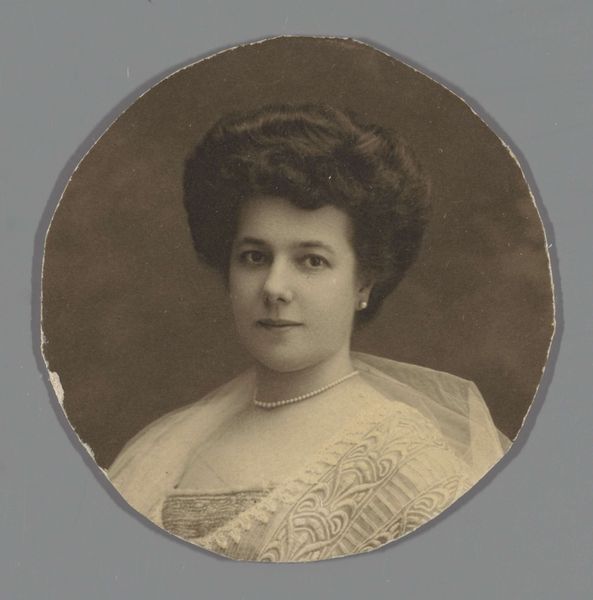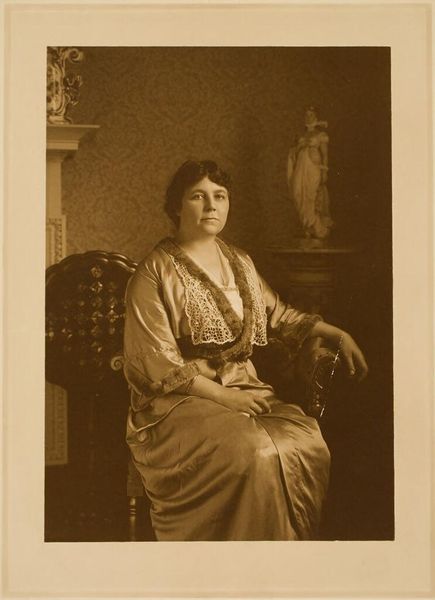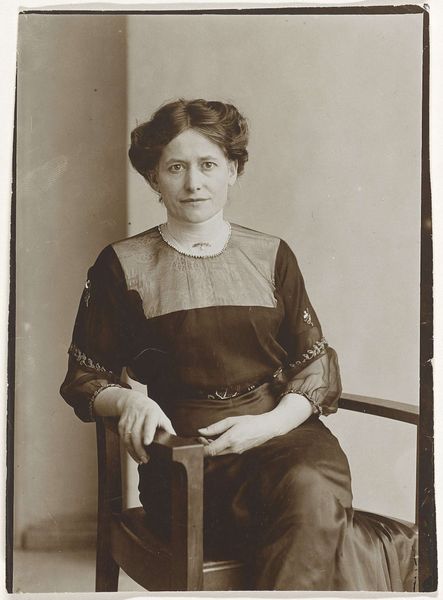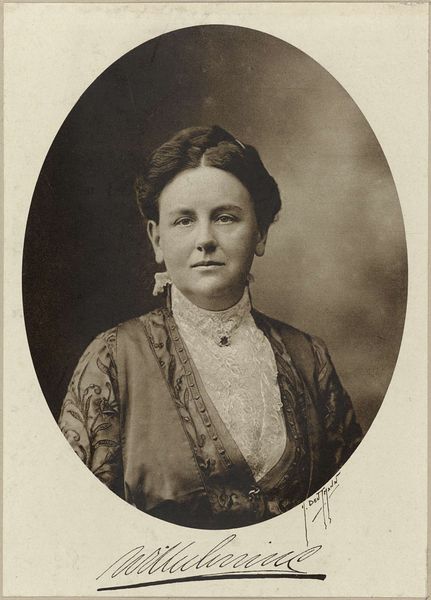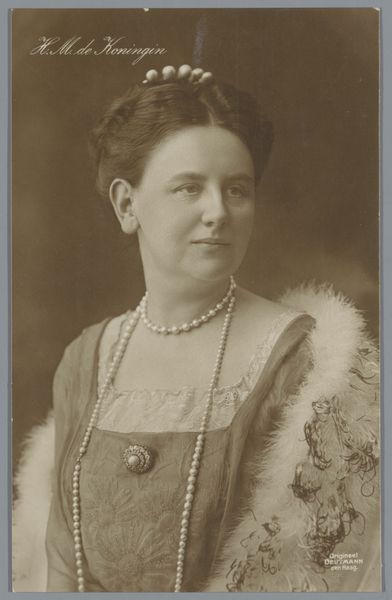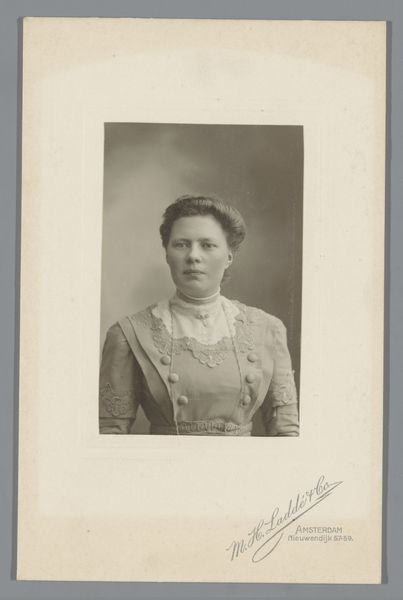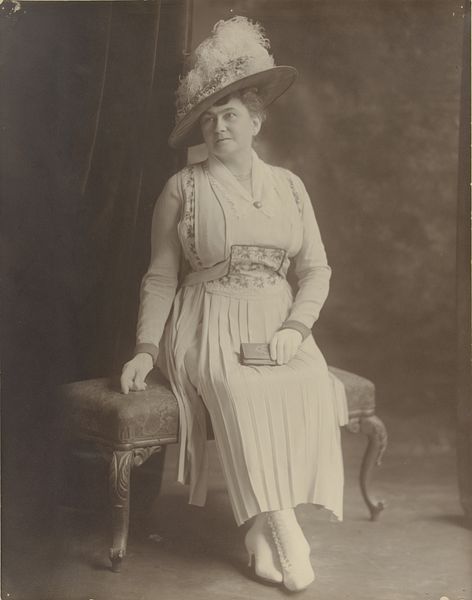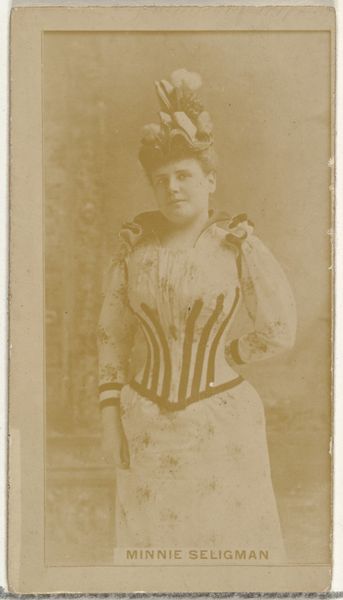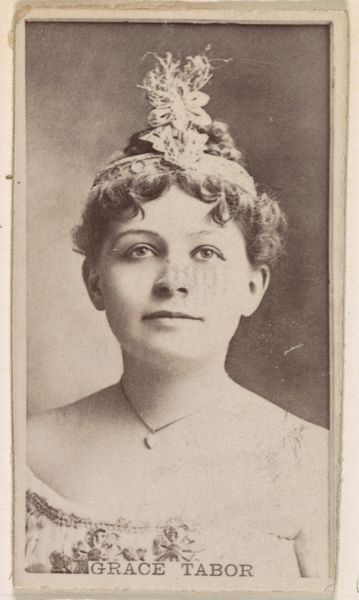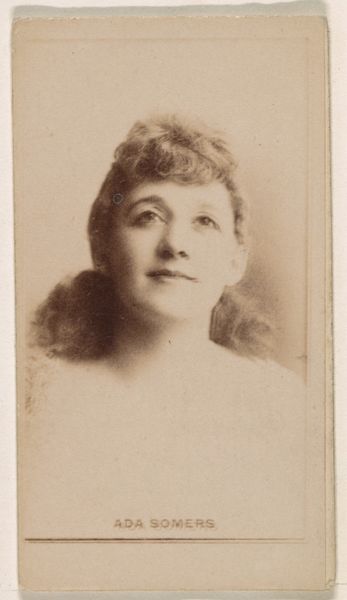
photography
#
portrait
#
self-portrait
#
pictorialism
#
photography
#
bridal fashion
Dimensions: 7 3/4 x 6 in. (19.69 x 15.24 cm) (image, sheet)
Copyright: No Copyright - United States
Curator: Looking at this, I’m immediately struck by a feeling of wistful longing; it’s imbued with such a tender melancholy. Editor: Well, let’s delve into what we’re looking at. This piece, simply titled "Untitled," is a photograph by William E. Dassonville, likely from around 1910. It resides here at the Minneapolis Institute of Art. Curator: There's a dreamlike quality to it, partially achieved through soft focus, reminiscent of pictorialism, which has clear roots in questioning representation, specifically notions of what's appropriate for whom to picture, when, and where. You have to remember, photography was still battling for artistic recognition. Editor: That’s right. Pictorialism, which Dassonville embraced, sought to elevate photography to the level of painting. The controlled manipulation of the photographic process to achieve artistic effects was crucial. We see that here in the almost ethereal glow and the carefully staged composition, which might explain the subject appearing in what contemporary viewers might perceive as bridal fashion. Curator: Exactly, there’s this delicate balance between the portrait itself, its subjects, and the artistic intervention of the photographer which produces a fascinating reading that questions so many assumptions around gender, authorship, class and access. Considering those factors, it makes sense that we also call it a "Self Portrait." Editor: Precisely! It raises questions about Dassonville's role as an artist, and also what kinds of audiences would even come into contact with such art at the time of its production and circulation. Did images like this circulate widely, or were they for a limited viewing audience? The subtle, sepia tones definitely contribute to a sense of looking back, a curated historical viewpoint. Curator: It evokes this longing, doesn’t it, the sepia acting like a veil. It's fascinating how technical aspects can so strongly affect the reading of this image. Editor: It's true. Understanding the context of early 20th-century photography helps to uncover these many layers that the photographer has constructed for us, so carefully. Curator: Yes, absolutely, a rich historical context allows us to appreciate Dassonville’s exploration of representation, class, and social mores within that era. Editor: And thinking through history like that allows a full appreciation of the technique.
Comments
No comments
Be the first to comment and join the conversation on the ultimate creative platform.
